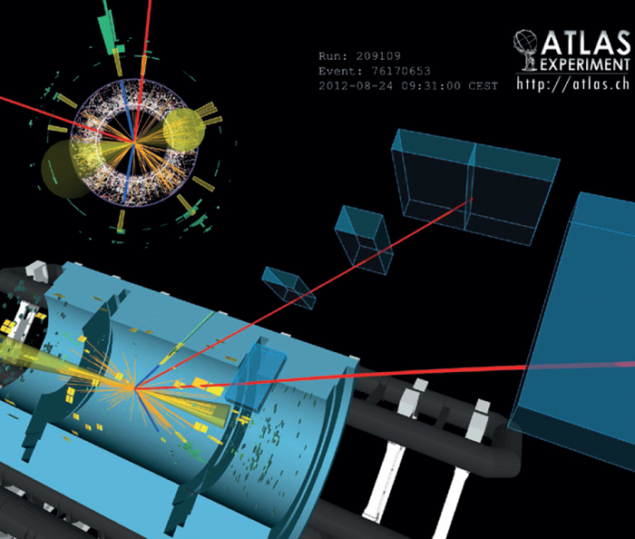
The discovery of a Higgs boson by the ATLAS and CMS collaborations in 2012 marked a new era in particle physics. Since then, the experimental determination of the properties of the new boson, such as its mass and production rate, as well as the study of its decays into as many final states as possible, have became crucial tasks for the LHC experiments.
The ATLAS collaboration has recently published a new set of measurements of the Higgs boson’s properties from the two high-resolution decay channels, to two photons (ATLAS Collaboration 2014a) and to four charged leptons (ATLAS Collaboration 2014b). The new measurements have been performed using the proton–proton collisions delivered by the LHC in 2011 and 2012. They exploit the most accurate knowledge of the detector performance achieved so far, which has also led to an updated measurement of the Higgs mass, mH = 125.36±0.41 GeV (ATLAS Collaboration 2014c).
The Standard Model predicts precisely the couplings of the Higgs boson to all other known elementary particles, once its mass is measured. The simplest way to probe the new boson couplings is to measure the ratio μ (or signal strength) between the number of Higgs bosons measured in the collected data and the number predicted by the theory: a measured μ = 1 would mean that the observation is consistent with the Standard Model Higgs boson. In these latest analyses, the signal strength in the two-photon channel is found to be μ = 1.17±0.27, while it is μ = 1.44+0.40–0.33 in the four-lepton channel. So, within their uncertainties, both results agree with the Standard Model.
The Standard Model also predicts that a Higgs boson can be produced through different mechanisms in proton–proton collisions. The most frequent mechanism (87%) is the scattering (or “fusion”) of strongly interacting gluons to form a Higgs boson. Production through the fusion of W or Z bosons is predicted to occur in 7% of the cases, and has a characteristic event signature of two jets in the forward direction (along the proton beams) that accompany the Higgs boson. The figure shows a candidate event for this production mode. In the recent papers, ATLAS physicists have identified and measured Higgs bosons from various production mechanisms (ATLAS Collaboration 2014a and 2014b).
So far, no surprises have emerged when looking into the details, but the statistical uncertainties are still large. The new data-taking campaign starting in 2015 will be important to improve the precision of the measurements, and will lead to an improved understanding of the nature of the Higgs boson.
Further reading
ATLAS Collaboration 2014a arXiv: 1408.7084 [hep-ex].
ATLAS Collaboration 2014b arXiv: 1408.5191 [hep-ex].
ATLAS Collaboration 2014c arXiv:1406.3827 [hep-ex].







